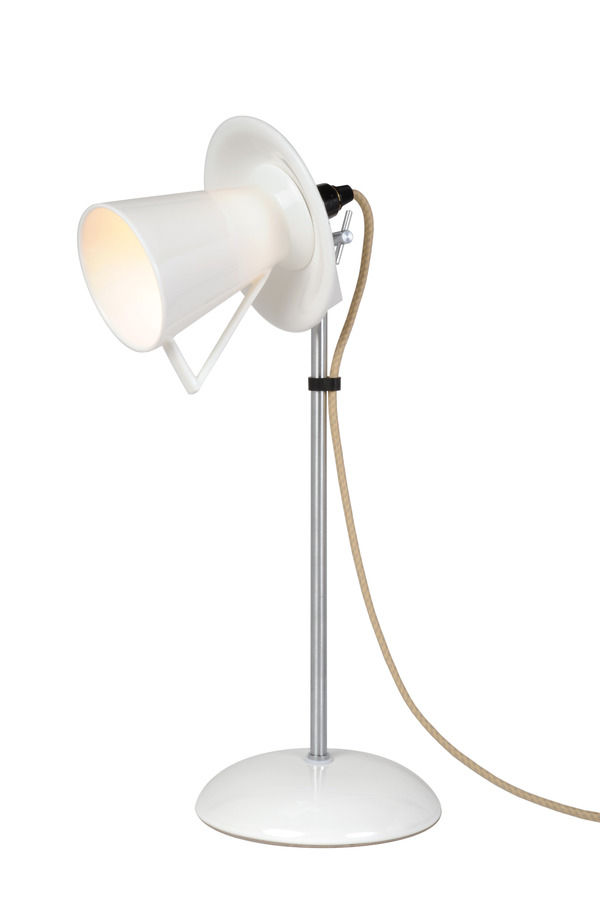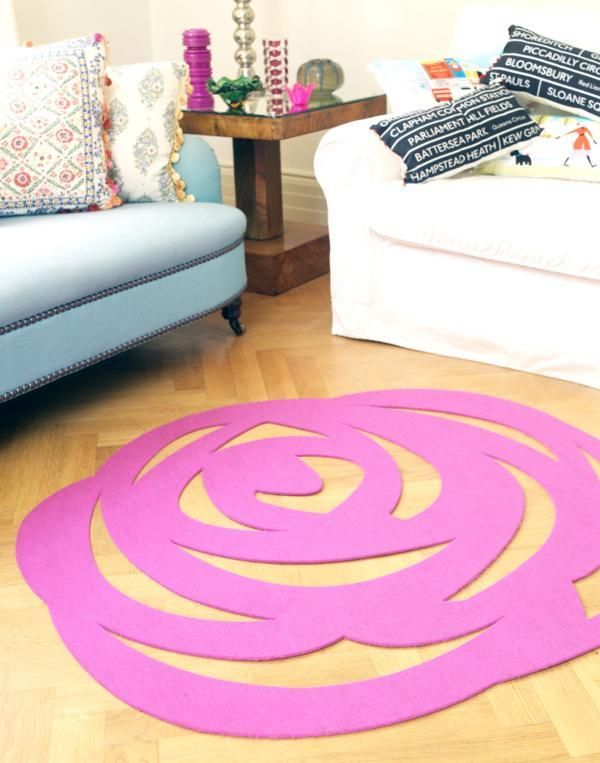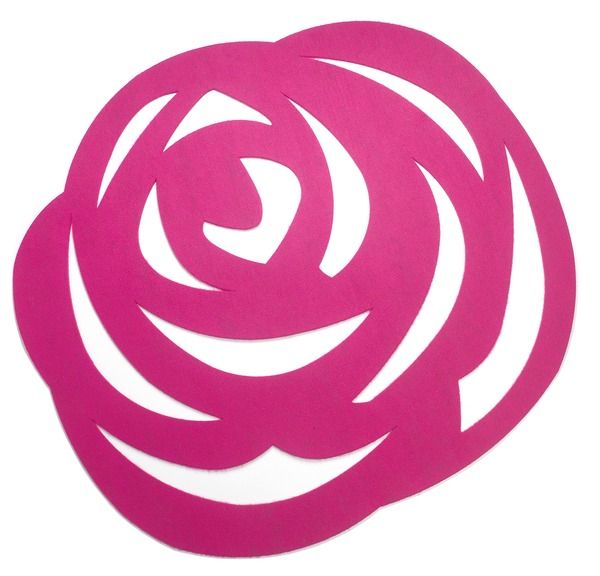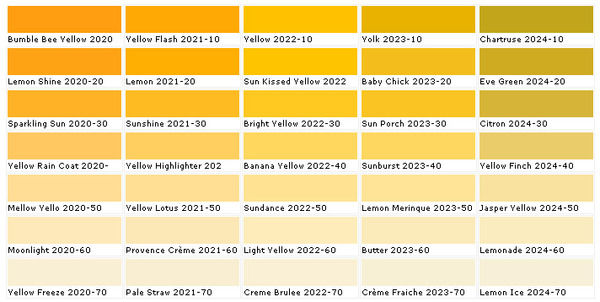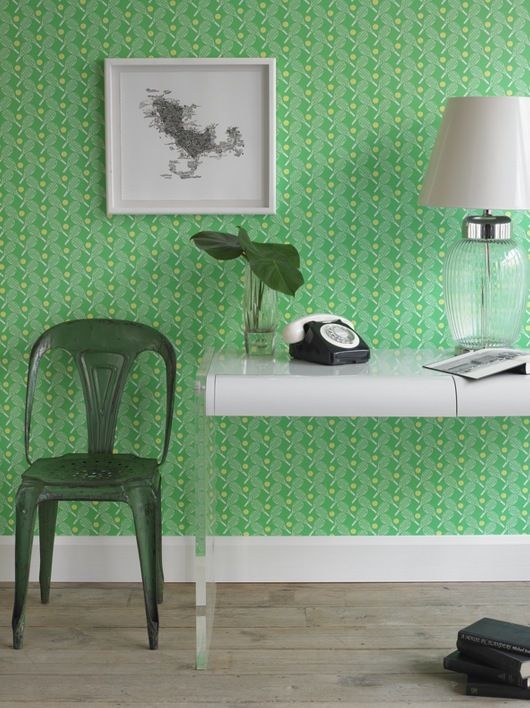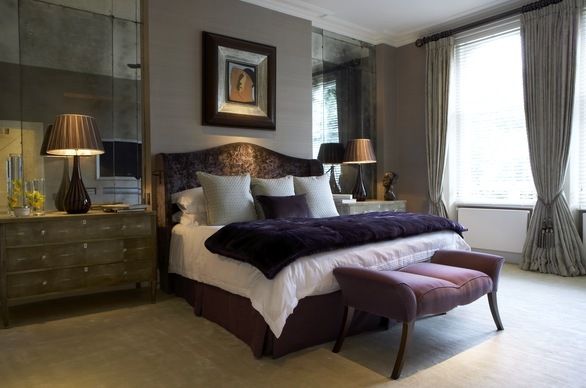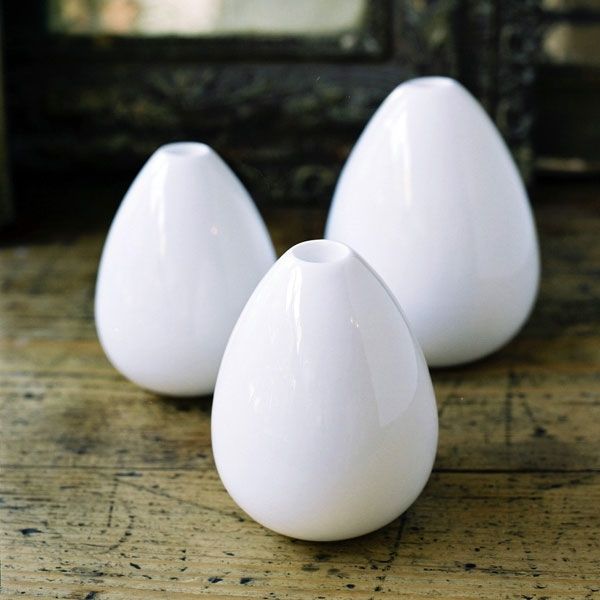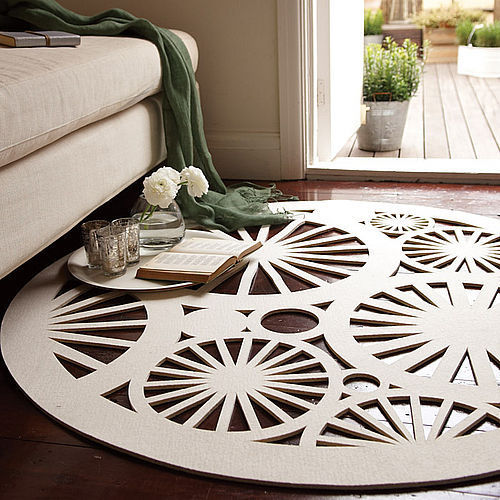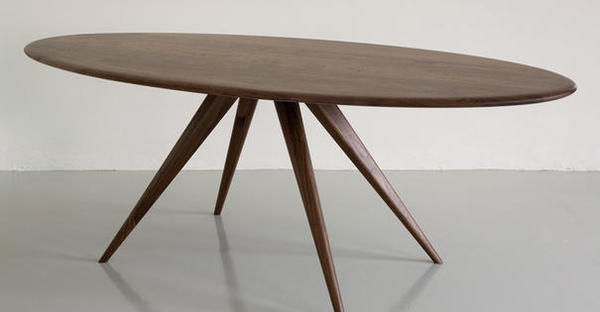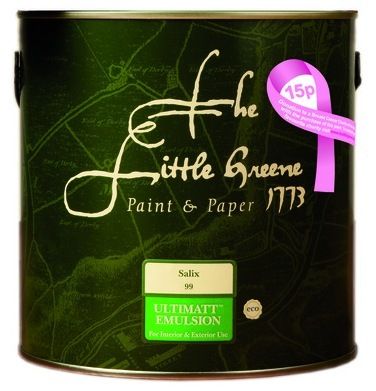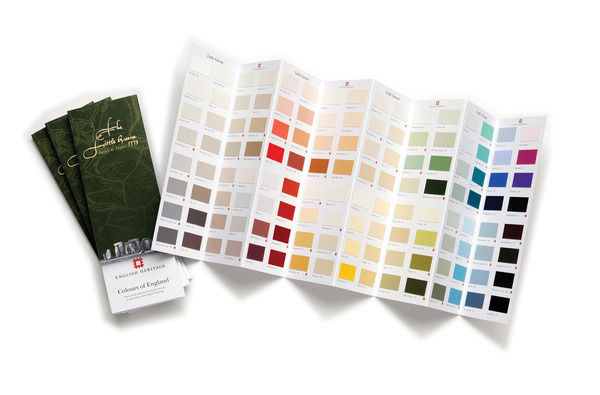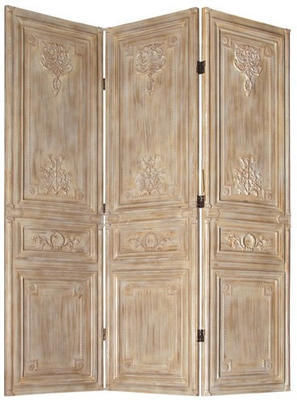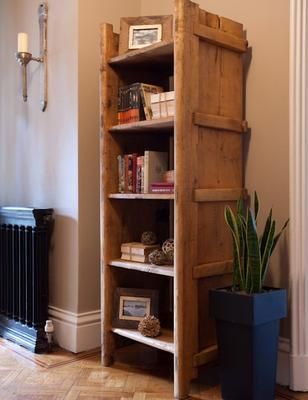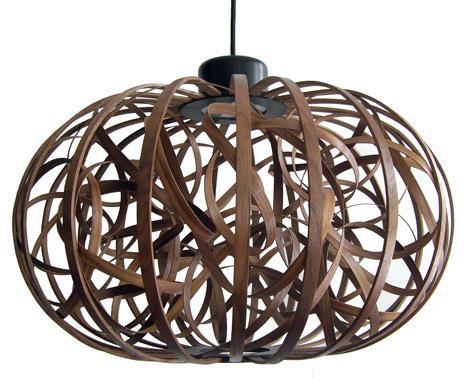It's our Interior Design Magazine!
The hottest interior design ideas, fab finds for the home and buying advice. We're always looking for new finds, designers to feature or anything else lovely for the home, so if you've seen something gorgeous and would like it featured in our interior design magazine, please get in touch!
100% Design
Sneak a peek at what’s on show at 100% Design.
100% Design London represents the best of contemporary interior design and architecture in the UK and internationally. Held over four days at Earls Court Arena, the event features world-renowned interiors show, 100% Design; architectural and interior materials exhibition, 100% Materials; and a showcase of emerging design talent, 100% Futures.
100% Design
Celebrating its 16th birthday this year, 100% Design is well established as a key event in the international design calendar; attracting architects, interior designers and industry insiders as the place to meet innovative suppliers and source new products. Showcasing the finest in contemporary design, the exhibition spans furniture, lighting and textiles, to kitchens, bathrooms, and interior fixtures and fittings. 100% Design is acknowledged industry-wide as the place to unveil new products and the rigorous selection process ensures that only original designs are exhibited. It’s a unique opportunity to explore and experience the cream of the crop, offering a one-stop-shop for industry professionals and design lovers alike. British design will be represented by such celebrated companies as Race Furniture, with new and classic pieces from the Ernest Race Festival of Britain portfolio; Anne Kyrro Quinn celebrating ten years at the show; and Gray Concrete with concrete wallpaper as seen in Manolo Blahnik’s Dublin store. This year sees an increase in international pavilions with individual and group deputations from Austria, Argentina, Belgium, Czech Republic, Italy, Japan, Latvia, Norway, Spain and more. Once again, 100% Design is hosting the prestigious Blue Print Design Awards. Awards include Best New Product, Best Exhibition Design, Most Promising Talent and Best Use of Materials; judged by industry insiders, the winners will be announced on September 23rd.
100% Materials
Significantly expanded this year, 100% Materials offers a dedicated platform for suppliers specialising in materials innovation and a source for architects and interior designers. Along with over 350 exhibitors, hand-picked for their creativity and originality, this year’s show features an inspirational seminar programme curated by Mix Magazine. Exploring the interaction of technology, design and wellbeing, the aim of the programme is to discover new ways to improve urban spaces and interiors, taking nature and ecology as inspiration. The programme includes speakers from Architects of Humanity, Pocket Habitat and Stylgraph, with discussions around innovative new materials, processes and colour trends. As part of the colour consultancy Global Color Research, Mix Magazine will introduce the latest colour trend predictions for Autumn/Winter 2011/12, and reveal how these global trends can be adapted to different environments. Sustainability is the watchword this year, with exhibitors showcasing experimental surfaces and creative applications for natural, composite and recycled materials. As well as new product launches, expect to see live experiments from Chris Lefteri’s materials laboratory.
100% Futures
100% Design London continues to support young designers through 100% Futures, now in its fourth year. Showcasing the best emerging talent from the UK and internationally, 100% Futures promises to be a feast for design hungry visitors. For exhibitors, it’s a not-to-be-missed opportunity to meet influential manufacturers, retailers, architects and interior designers. Highlights this year include Norwegian designer-maker Beate Einen’s bespoke glass lighting and sculptural one-of a kind vessels; London-based design collective Print, Tuft & Fold’s exuberant textiles; and Nottingham newcomer, Porcellana & Duomo’s evocative porcelain wall panels. Print, Tuft & Fold is also producing a collection of 18 seating cubes for the main entrance at Earls Court, including an array of kaleidoscopic-inspired carpet cubes, graphic digitally printed cityscape cubes and tactile pleated fabric cubes. Joining 55 others at 100% Futures is James Michael Shaw, winner of this year’s New Designers 100% Design Award. His prize is a 9sqm stand at the event and judging by previous winners, it’s certain to be a must-see. Shaw’s work maintains the delicate balance of form and function, finding beauty in simplicity. Judges were impressed by the ‘strong use of industrial materials’, describing his designs as ‘original and utilitarian’.
Open to the public on Sunday 26th, 100% Design London is a fantastic place to pick up ideas, meet designers and soak up some style.
Spotlight on: Original BTC
We turn the spotlight on Original BTC to learn more about their collection of lighting.
Design luminary, Peter Bowles, founded Original BTC in 1990, upon his knowledge of retail, manufacturing and design that has come from the depths of his family history. Peter’s designs are a collaboration of original and classic pieces which have been inspired by traditional factory fittings, childhood toys and iconic 1940’s design. Entirely manufactured in the UK, Original BTC lighting is hand-assembled in Oxford from the finest chrome, aluminium and bone china.
First and foremost, at Original BTC quality of style and design naturally coincides with producing sustainable and practical lighting in order to give the best result. The company is renowned for its relaxed lighting that is suitable for either contemporary or traditional homes. Creating the perfect ambience is essential and Original BTC use precision in detailing and a mix of materials to achieve this; metallic painted, glass or china shades are paired with polished satin or chrome bases. Peter claims that his aim was “to design and produce lights that you are instantly at home with, that will fit easily and comfortably for many years to come.”
The stylish collection covers all your lighting needs with wall and floor lamps sitting alongside table and pendant lights. From bone china, metal and prismatic glass, there are so many fabulous designs to choose from that offer both style and versatility. The influence behind the designs comes from the clean lines of traditional factory fittings and the versatility of mid-century style. Over 70% of the company’s lighting is exported worldwide, and widely recognised by acclaimed French designer Andrée Putman, John Pawson and Terence Conran. Also, you will find Original BTC products lighting up the likes of Gordon Ramsey’s Maze Grill restaurant in London, and making us say ‘Oh là là’ about Paris’ new concept store, Merci. Their lighting is being used in these well known places because it has a classic style that draws attention.
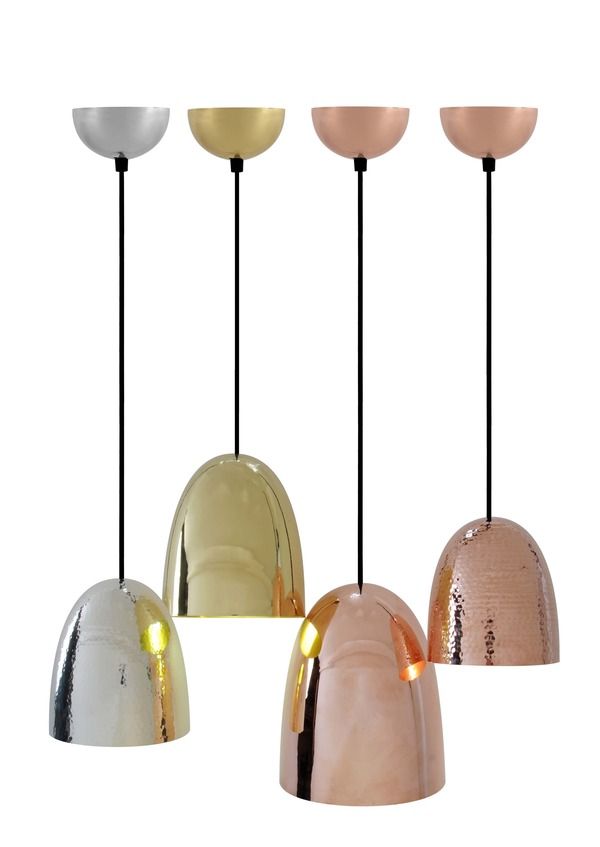
New for Spring/Summer 2010, the retro-inspired London desk light, designed by Charles Bowles (the son of Founder, Peter Bowles), epitomises modern design with its simple clean lines. It has a spun aluminium semi-sphere shade, solid chrome base and a matching cotton braided flex to give it a tailored finish. The London is available in black, putty grey and yellow to suit any sophisticated study, and its intriguing shape looks great from all angles. Original BTC have also released a new limited edition task light known as ‘Jack’; this is made to order and features a hand-painted British flag featuring the iconic patriotic colours of red, white and blue.
The Stanley Range includes three sizes of pendants which are available in solid copper, solid brass, or nickel plate. Made to order, you can choose a hammered or smooth reflective finish, and they give a spectacular look when grouped together or you can mix metals for a contemporary and interesting appeal. These provide a stunning effect because their narrow cylindrical shape creates a spotlight over a feature, or they simply be used as decorative pieces. The Stanley range was launched in September 2009 along with the Cosmo pendants and table lights, available in ribbed prismatic glass shades, which sparkle and refract light to create beautiful shadow play on the polished chrome bases.
My favourite is ‘The Tea Range’ for its fanciful tea cup and tea pot shaped pendants and table lights which are inspired by 1930’s tableware. They are ideally suited to dining rooms or kitchens to create an imaginative style that takes traditional pieces of tableware, and evolves them into fantastical designs. Staying true to their original design, they are made from bone china like a fine English tea set, giving them a delicate appeal.
So, here is yet another example of how British manufacturing is building and increasing in popularity to support the economy. Original BTC is founded on values that encourage British-made products and designs; in fact Peter Bowles strongly believes in producing excellent quality and good value designs and takes pride in the fact that they are manufactured in the UK.
Original BTC will be exhibiting at 100% Design in London, Sept 23rd-26th 2010. For the complete range of Original BTC lighting, visit www.originalbtc.com, and for more information tel: 0207 351 2130.
Michelle Mason collaborates with Livia Firth to reveal the Roseta rug.
This gorgeous, eco-friendly rug is sure to bring a feminine touch and beautiful detailing to any floor.
The collaboration between Michelle Mason and Livia Firth has produced spectacular results. Designed exclusively for Eco Age, the duo have created an environmentally-friendly rug which exudes style and boasts excellent sustainability.
The Roseta rug is uniquely made out of felt from 100% recycled plastic bottles, and will be available in pink and black. However, Eco Age offer a bespoke service which means that the rug can be custom made in a gorgeous range of colours. It has hardwearing qualities but it is soft underfoot and its texture gives a stylish appearance to natural wood floorings.
Livia Firth, Creative Director of Eco Age, has commented on why she chose to work with Michelle on this design: “I fell in love with Michelle's work a couple of years ago when we were sourcing ethical interiors for Eco Age - it is always elegant and unusual at the same time and totally feminine. We are very excited to do this collaboration with her and to have the first ever plastic bottles rug.... By looking at it, you won't believe it!”
Similar to Michelle’s Stella rug, the Roseta is a contemporary take on lace-making with its intricate cut-out style, giving it a very delicate and feminine look. A perfect talking point for any living area or bedroom, the Roseta encompasses the strength of modern design and the ability to create products that are sustainable and kind to the environment.
Michelle will be unveiling the Roseta rug at 100% Design Earl’s Court, London, Sept 23rd-26th, Stand No. H60. The Roseta rug will be exclusively available from www.michellemason.co.uk and www.eco-age.com.
Colour watch: Yellow
Even on a cloudy day, sunshine yellow shades will brighten up your home and put a smile on your face.
From citrus hues and bright daisy yellows to creamy and buttery shades, yellow is a comforting and warming colour. Yellow denotes happiness and colour researchers have found that it raises self-esteem. Yellow daffodils are associated with unrequited love, but yellow can supposedly sharpen memory and concentration skills. Van Gogh saw the potential and power of colour, and claimed that ‘yellow is capable of charming God’: he observed the strength and influence of yellow on our feelings, and this illustrates the impact that this colour can have in your home.
Choosing the right yellow
When choosing a shade of yellow, think about the mood you want to create and how the lighting in your room will affect the look. Daylight won’t make yellow paint so intense, whereas most incandescent bulbs have a very yellow cast that will strengthen your paint colour. Yellow can have warm undertones such as red or orange, or cooler tones of green or brown: choose warm yellows for warm-toned rooms with dark wood furnishings for example, and cooler yellows for a neutral and natural décor. Decide whether you want to use yellow as the focus or as an accent in your room; a room decorated in soft, creamy yellows can give a quaint, country home style, while a splash of bright yellow in a dark room can make a space look modern and give a cheerful feel.
Tonal scheme
Rich, sunset yellows work well in a monochromatic scheme with black and white because they create a stark contrast whilst neutralising each other’s dramatic effect. While straw and cream shades on walls are offset beautifully by sun-kissed yellows on cushions, vases, lampshades, and other accent pieces. You can compliment yellow with lots of white; drawing inspiration from nature, you can use daisies as an example of how you can create a simple, clean and fresh look. Any living area or bedroom with warm yellow walls can be enhanced and modernised with crisp white furniture, fabric, curtains, throws and mirrors.
If you want to introduce yellow furniture, minimalism is the key because too many large-scale pieces will not work as well together. Block colour is a desired trend and can work well in this case where you can use a couple of small key furniture pieces in yellow, for example an armchair and a pouffe, to inject the power of yellow into your living room without it becoming too overwhelming.
Complementary colour schemes
Since it is a primary colour, yellow can be paired with almost any other shade: use orange and red hues to enhance the warmth in a room. Choose one dominant shade and one secondary colour to make this scheme work; varying tones can give a room depth and they keep your space feeling fresh.
For visual contrast use purple, the complementary colour of yellow, to create an equal balance of tone and intensity. Purples and blues bring out the cooler tones in yellow; if you are keen to follow a pastel colour scheme try lilacs and pale lemon shades for a calming and relaxing ambience.
Warmer orange tones of yellow create a sensual and exotic look when combined with luscious aubergines; try this in a bedroom for a rich and sensual ambience.
Accents
Accents are great if you are a bit cautious about decorating all over with yellow; it is one of the most luminous of the colours and reflects a lot of light. Pair yellow with a cooler accent shade such as soothing grey which will neutralise the brighter tones. Choose bountiful floral arrangements to bring a feminine and spring-like feel to any room. Or try gold accents in your artwork, accessories and fabric, to lift your scheme and add a feeling of opulence.
Interview: Turner Pocock
Bunny Turner and Emma Pocock spill the beans.
Turner Pocock is a London-based interior design company providing a tailored service for private residential and commercial clients in the UK and abroad. Established by Bunny Turner and Emma Pocock, the company specialises in sourcing contemporary art and commissioning bespoke furniture. With a keen grasp of design history and an eye for style, Turner Pocock creates sumptuous, liveable spaces in which old and new are deftly combined. A love of colour, pattern and texture is evident throughout, and in a recent venture Turner Pocock teamed up with artist Catherine Cazalet to produce a series of graphic and vibrant wallpapers. We caught up with Bunny and Emma and here’s what they had to say:
How would you sum up the Turner Pocock style?
We’ve been described as having a schizophrenic style because every project we work on is so different – we prefer it that way as it keeps us on our toes! I suppose what defines us is a eclectic approach where we mix contemporary and antique pieces to give a feeling that the room has come together over time – rooms can look over designed and unlived in if everything is new!
You’ve created a series of sophisticated yet playful wallpapers with Catherine Cazalet. What inspired you to create a collection of wallpapers and how the project evolved?
We’d always wanted to get into product design and development and as we use a lot of wallpaper in our schemes it seemed the obvious choice. We also felt there was a void in the market for children’s wallpapers that weren’t clichéd in their use of colour or subject.
What led you to the distinctive sporting and animal prints?
Catherine developed the cricket paper concept while she was in India where they are fanatical about the sport – we felt that the small pattern repeat worked really well and decided to explore other England-centric sports in the same way. Tennis seemed like the obvious second subject. Both sports have a retro feel to them and are quintessentially English. The zebra design stems from Catherine’s paintings/murals of Zebras, which she has become well known for so that was really the starting point.
Who would be next on your list of ideal collaborators?
We’ve got our eye on a fab fashion textile designer who’s based in Singapore at the moment.
As specialists in sourcing contemporary art, how has a love of art influenced your choices in interior design?
Art and accessorising is very important in all our schemes – the pictures/sculptures/objects can make or break a room. Sometimes we will even start scheming from a picture and take the colour/style lead from that point.
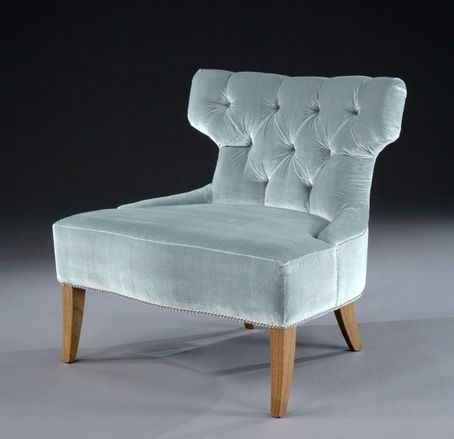
Are there particular artists that you look to when thinking about colour schemes?
We don’t have a huge amount of control over this as the choice of artist is driven by each client and varies hugely depending on our brief. Scale is as important as the style – a grid of small pictures can look fantastic and make a small room feel bigger – likewise a large, dramatic painting or photograph can create focus and hold a room together.
Your work shows a real appreciation, and elevation, of material qualities and craftsmanship. Creating interior spaces that are perceived and experienced sensually, which materials to you particularly like to work with?
We love using different textures/patterns - it makes the experience of a room much more interesting. We use shagreen [shark skin] a lot – our furniture collection demonstrates that!! But we also like to mix the use of stone, wood, lacquer, mirror on wall/floor/joinery finishes. Walls are also a great place to add depth and texture – either with a patterned wallpaper, or grass cloth and polished/textured plaster. Then we finally look at the fabrics and make sure that there is as much variety as possible – mohair, linen, silk, satin. Geometric patterns, plains, stripes!
Many of your furniture pieces have an Art Deco feel to them. Do you have a favourite historical period in terms of interior design and furnishing style?
We mix styles and periods – each era produced fantastic iconic pieces and it’s a question of mixing the best from each period to create a fusion of styles that doesn’t feel over-designed.
How would you advise people on combining historical references and contemporary styling in one space?
They should buy what they love and that way their taste will be what unites the scheme.
Which have been you most enjoyable/memorable interior design projects?
One of our first projects was for a client who didn’t say no to anything! He trusted us and had great existing furniture for us to work around. We’ve also worked on some fantastic projects abroad – in Bahrain and the South of France – it’s amazing how the different lifestyles/environments/light affects the way we design. We love the variety.
If you could design a room for any person (dead or alive), who would it be and why?
Matthew Williamson – he has a great sense of style and colour which we’d love to work with.
Which current homeware designers do you particularly admire?
Tom Dixon, Kelly Wearstler’s rugs and fabrics, Ashley Hicks and Neisha Crosland’s rugs and fabrics.
What’s your favourite high-street and high-end home furnishing brand/store?
The Conran Shop and Andrew Martin.
What’s been your best interiors bargain?
We’re both magpies and always keep our eyes out for beautiful useful things. We’re particular fans of framed antique flags and pick them up whenever and wherever we find them – usually from flee markets. Maps are also another favourite find and they don’t cost the earth.
Which three objects would you save if your house was on fire?
We’re both constantly changing how we want our homes to look so the objects are less important –think we’d have to say it would be people and pets! And maybe some precious pictures. It would also give us an excuse to redecorate.
What do think will be the next big trends in interior design?
Hopefully an end to neutral/taupe colour schemes! Luckily we don’t tend to follow trends so it’s not really important to us!
What’s next for Turner Pocock?
We’re working on some exciting projects in the UK at the moment and hope to introduce some new wallpapers to the existing range towards the end of the year. The main aim for Turner Pocock is to do a ski chalet – we’ve both enjoyed living in the Alps at different stages in our lives and have dreamed about creating the perfect chalet ever since!!
Find out more about Turner Pocock’s interior design service and bespoke furniture collection at turnerpocock.co.uk. The wallpaper collection can be viewed and purchased online at turnerpocockcazalet.co.uk.
RIBA Stirling Prize 2010

2010 Stirling Prize Shortlist unveiled by RIBA.
The Royal Institute of British Architects (RIBA) Stirling Prize is awarded to the best new building in the UK and Europe designed by a British architect. The 2010 shortlist of six buildings has just been released and the winner will be announced at the RIBA Stirling Prize Dinner on October 2nd. Named after the great British architect Sir James Stirling (1926-1992), the prize is run in association with the Architects’ Journal and Benchmark. The Stirling Prize is presented to the architects of the building judged to have been ‘the most significant for the evolution of architecture in the past year’.
This year’s shortlist includes two schools for the first time in the award’s 15-year history; a message perhaps to the axe-wielding education secretary, Michael Gove, on the value of good design. Ruth Reed, president of the RIBA, didn’t mince her words: "Investment in well designed schools demonstrates to teachers and pupils how much they are valued and has measurable impact – attendance and results rise; truancy and bullying fall. With the programme to improve our extremely poor school estate now much reduced it could be some time before we see such exemplar school buildings on the Stirling shortlist again." Another first in Stirling history, a total of three museums have made it on to the shortlist. An extension to the Ashmolean Museum in Oxford, a reworking of the Neues Museum in Berlin, and the newly built MAXXI Museum in Rome are all in the running for the £20,000 prize money. Reed described the projects as demonstrating ‘three very different ways of building and rebuilding museums and galleries’ and, again alluding to public sector funding cuts, explained that these buildings ‘are the fruits of an economic boom in the last decade and sadly may represent the end of an era’. The final contender for this year’s prize, and the smallest of the six projects short-listed, is a mixed-use development in east London, combining a studio, art gallery and office space with four private apartments.
Here’s a rundown of the six nominees vying for the prize:
Neues Museum by David Chipperfield Architects with Julian Harrap Architects
Berlin’s Neues Museum was originally built in 1859 to showcase the Prussian Empire’s archaeological and scientific capability. Sustaining bomb damage in WWII, the museum has been sympathetically restored and reshaped by David Chipperfield and Julian Harrap Architects. The creative reworking of the museum, in which the major new material is pre-cast concrete, has been praised by the RIBA as an exemplar of ‘understated beauty’. The revamped museum has proved a hit with Berliners and David Chipperfield, who received the 2007 Stirling Prize for another German museum, is tipped by many to triumph again this year.
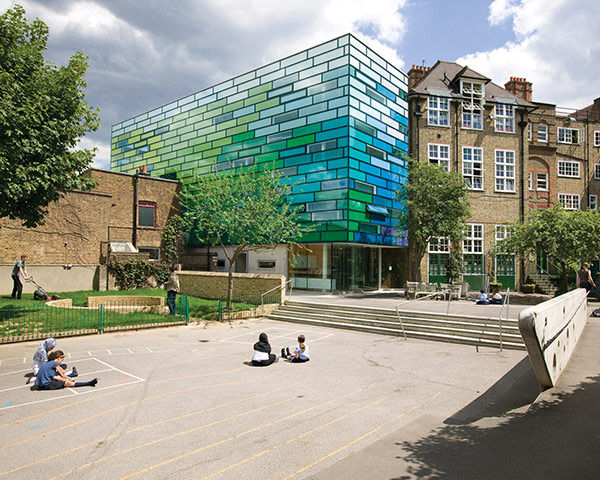
MAXXI National Museum of XXI Century Arts by Zaha Hadid Architects
British-Iraqi Zaha Hadid is perhaps the best-known woman architect in history, but her work has struggled to gain acceptance in the UK, and she’s yet to complete a major building on home soil. (The first will be the London 2012 Olympic swimming pool and diving centre.) This is Hadid’s fourth nomination to the Stirling shortlist, but the prestigious prize has so far evaded her grasp. This lack of recognition, and the fact that RIBA considers the MAXXI to be Hadid’s best building yet, has the Rome museum ranked as odds on favourite at the bookies, with William Hill offering odds of 11/10. Located in the suburbs of the Italian capital, the MAXXI National Museum of 21st Century Arts is a building of sinuous curves and multiple intersecting levels; unwinding ‘like a ribbon in space’, says Hadid. The judges described the serpentine routes and pathways and the elegant unfurling of space as the ‘quintessence of Zaha’s constant attempt to create a landscape, a series of cavernous spaces drawn with a free, roving line’.
Christ’s College School by DSDHA
Once the target of firebombing and casual vandalism, Christ’s College School in Guildford now features a £14.4m extension by DSDHA, the firm of Deborah Saunt and David Hills. Both pupils and teachers have commented that a sense of pride in the new building has directly influenced an improvement in behaviour and that the wide, light-filled corridors and stairwells have reduced opportunities for bullying. This is a great example of how thoughtful planning, progressive architecture and humane design have far-reaching implications for individual wellbeing and social cohesion. Along with Clapham Manor Primary, Reed described the new building as a model of ‘what all schools should be: light, well-laid-out and well-equipped environments in which all students can flourish’.
Ashmolean Museum by Rick Mather Architects
A project to double the size of the Ashmolean in Oxford, the oldest museum in Britain, was completed by Oregon-born, London-based architect Rick Mather, without disturbing the neoclassical original. Erected by Mather’s team, the complex arrangement of new galleries is situated behind Sir Charles Cockerell’s 1845 Grade I listed building. The disorderly late-Victorian galleries at the rear have been replaced by a six-storey building adding 34 new galleries for the permanent collection and four for temporary exhibitions. The entrance hall now opens on to the light-filled atrium of the new extension. Surrounded by buildings on three sides, Mather maximised available light by putting a glass roof over the central space, creating an 80ft atrium traversed by steel and glass bridges. Either side of the central space double height galleries for major displays alternate with auxiliary galleries with lower ceilings.
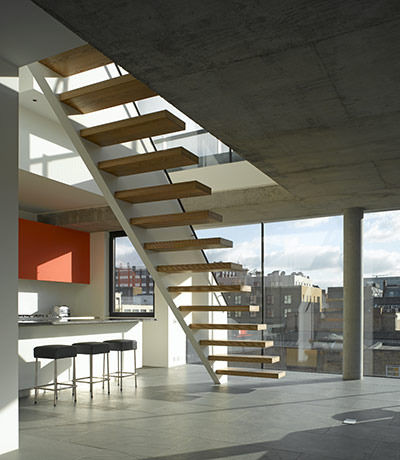
Clapham Manor Primary School by dRMM
De Rijke Marsh Morgan’s extension to Clapham Manor Primary School is clad in vibrant multi-coloured glass panels. A freestanding addition to the school’s original 19th century building, the Stirling judges applauded ‘an inventive and uplifting example of what the next generation of school buildings could be’. Inside there are no enclosed corridors but galleried walkways; classrooms are accessed from the central atrium and pupils flow freely through a series of adjoining spaces.
Bateman’s Row by Theis and Kahn Architects
Bateman’s Row in Shoreditch east London was built by architect couple Patrick Theis and Soraya Kahn. The mixed-use development houses an art gallery, studio and office space along with four flats. The building provides several rentable units, while Theis and Kahn live on the top three floors, complete with roof terrace and stunning views of London. The project took ten years to complete and the panel said it was executed with ‘extraordinary care and judgement’. On a small footprint, the scheme maximises light and space by building vertically in distinct phases over five floors and introducing wide expanses of plate glass. Internally exposed concrete throughout and rough-hewn edges at ground level respond to the building’s industrial origins and local setting.
The Stirling Prize judging panel will be visiting the six buildings nominated in the next few weeks before the winner is announced in October.
Focus on: Michelle Mason
Introducing one of the hottest designers of the moment, designer-maker Michelle Mason.
Michelle Mason has become renowned for her contemporary interior products, and since launching her début collection of home wares in 2006 her colourful and exciting surface patterns have been very well received. Before becoming a successful designer, Michelle graduated in Fine Art and has a BA in illustration. Since then she has conquered the world of interior design, and achieved many prestigious awards including winner for ‘Best Press Profile’ from the Hidden Art Annual Awards in 2009. Michelle’s unique Stella wool rug was shortlisted for the Homes & Gardens Classic Design Award, 2009.
Inspired by repeating plant forms, nature and everyday life has influenced Michelle’s bold graphic style and characteristic organic designs. Michelle’s products are British made, and locally sourced and manufactured in the UK to ensure that only environmentally friendly materials are used. The first collection included Perspex laser-cut table lights, and fabric lampshades that are printed onto eco-friendly unbleached cotton satin. Michelle says that “everywhere I look I find inspiration- I keep my eyes wide open and try never to miss a design opportunity.” Also, commenting on her cushion collection featuring digital prints of London life, Michelle said: “I’ve thoroughly enjoyed working on this collection and the opportunity to return to my first love of illustration.” Her love of design and drawing on aspects of everyday life shines through in her work which draws on poignant childhood memories, and is inspired by old picture postcards, vintage biscuit tins and fabrics, and walks in the park.
Egg Candle Holders
Made with English fine bone china, the egg candleholders have an aesthetically pleasing shape. Happy childhood memories of dipping bread into soft boiled eggs were Michelle’s inspiration behind the design. The design was selected for the Hidden Art Select Collection due to its originality and it was launched at 100% Design in 2007. This unique piece brings together style and functionality; it can hold a standard 20mm diameter candle, and it can also be used to hold a single flower head, plant cutting or a bamboo stem.
Stella rug
The Stella rug is Michelle’s ‘hero’ product because of its decorative style, and the naturally irresistible texture makes it a talking point for any room. It is made from 100% wool felt, a biodegradable and sustainable material that is soft to the touch. Elegant and stylish, the rug is ideal for living or bedroom areas for textual interest, but due to its cut-away nature it is not intended for high-traffic areas such as hallways. Michelle’s inspiration came from wanting to recreate in large scale the fine detail of antique lace. The design exemplifies a new, contemporary take on lace-making, and it’s beautiful surface and texture looks equally stunning on carpet or natural wood floors. It is available in black, natural cream and purple but can be made to order in a variety of colours that can work individually or be used in multiples on a large floor space.
‘London Calling’ cushion collection
The London Night cushion is one of the newest illustrations to Michelle’s collection of cushions called ‘London Calling.’ Its quirky illustration depicts a fanciful evening scene in the busy Capital and it links in with the other cushions in the collection which similarly show familiar scenes from London life, some feature the iconic red Routemaster bus or a black cab, and other famous buildings. The designs are digitally printed onto soft but hardwearing cotton satin and backed with unbleached calico. Her illustrations bring colourful scenes and each one tells a story which makes them a unique and quaint addition for your home. The Flower Market cushion is my personal favourite, featuring east London’s famous Columbia Road Flower Market, because it tells an imaginative story of the colourful and exciting aspects of everyday life.
Complementing her range of cushions, Michelle’s Melamine mugs, tumblers, trays and tea towels follow the same London theme including prints of London Art Deco tube stations. The London Transport Museum shop commissioned the mug and tray designs to coincide with their exhibition, Suburbia.
Excitingly, Michelle’s up-and-coming project sees her working with the National Gallery on a range of products to be launched this year. She launched several new designs at Pulse London 2010 in June including her All Aboard cushions, London Life Trainer cups, and further illustrations of the London Life cushions.
Michelle will be exhibiting her products at 100% Design in Earl’s Court Arena, 23rd-26th September 2010, at stand H60. Visit michellemason.co.uk for further product information and stockists.
Hot off the press…fabric
Our hot picks from the world of fabrics.
We’ve been rummaging around in the wonderful world of fabrics to bring you the latest news from established brands and emerging talent.
Timorous Beasties
Founded in Glasgow, and once described as ‘William Morris on acid’, the design studio Timorous Beasties has developed an iconoclastic style, printing surreal and provocative imagery on traditional textiles and wallpaper. Timorous Beasties are experimental in approach to both hand-printing methods and machine production. This innovative approach is reflected in an evolving aesthetic: from early surrealistic and distorted naturalistic images of insects, plants and fish, to a new graphic style which explores social and political themes. The Glasgow Toile, featured in the recent Quilts exhibition at the V&A museum, epitomises this uncompromisingly contemporary graphic style. At first glance it looks like one of the bucolic pastoral vistas depicted on 18th century Toile de Jouy textiles, but closer inspection reveals a nightmarish vision of contemporary Glasgow, in which addicts, prostitutes and the homeless are depicted against a threatening backdrop of decaying tower blocks and scavenging seagulls. Other fabrics for 2010 include the ethereal Lace collection, which has a hint of Miss Havisham about it, and the Digital collection, a development of Timorous Beasties trademark naturalistic imagery, with fabrics depicting moths, insects, amphibians and plant forms. Naturalistic, lace fretwork, damask and Toile de Jouy imagery is repeated across the Velvet, Linen and Woven fabric collections.
Abigail Borg
Since launching her wallpaper collection in 2009, illustrator and surface pattern designer Abigail Borg has received a clutch of industry awards. Influenced by traditional pattern design, particularly that of William Morris and the Arts and Crafts movement, Abigail combines a timeless approach to drawing and pattern design with the latest in digital printing methods and a passion for vibrant colour. Her striking, vintage-inspired floral prints, rendered in a series of luscious colourways, now feature in the recently launched fabric collection. Available by the metre as well as hand finished feather-filled cushions; it’s a beguiling collection of bold English country-garden prints and vivid, saturated colour, achieved through digital printing. Perfect for curtains and upholstery, the dramatic colour ways and graphic style give the collection a contemporary edge, offering vintage-inspired design for a modern setting. Our favourites are the Polka Polka fabric, depicting hydrangeas and red-hot pokers in white, duck egg blue, pea green, and shades of pink on black ground; and the soon to be released Peonie Fox, featuring peonies and foxgloves in white, pink and pea green on a pale turquoise ground. We’ll be interviewing Abigail soon, so watch this space.
Designers Guild
Designers Guild is a well-established brand with a well-deserved position in the world of interiors, consistently offering original, stylish and liveable fabric and wallpaper collections in coordinating colourways and patterns. Designers Guild does colour exceptionally well, with new combinations each season and its own line of complementary paints. Textiles range from the block-coloured Essentials collections, containing over 2000 plain and textured fabrics, through contemporary and vintage-inspired florals, to architectural patterns and graphic geometric motifs. We love the striking hexagonal repeat pattern on the Leopold fabric (2010 Darly collection) and the fretwork, interlocking motif on the Rheinsburg fabric (2010 Pavilion collection). These dynamic geometric prints are accompanied by nostalgic florals and flowing arabesques in complementary colourways. The Designers Guild furniture range, encompassing both contemporary and vintage-inspired designs, is available to be upholstered in any Designers Guild fabric. And as well as fabrics by the metre, Designers Guild has a fantastic range of cushions, bed linen and blankets, throws and table linen. Rugs feature oversized patterns and motifs taken from the wallpaper and fabric collections. Designers Guild is a distributor of The Royal Collection, inspired by the interiors of Buckingham Palace and Windsor Castle; the Ralph Lauren Home fabric and wallpaper collections; and William Yeoward’s luxurious fabric and wallpaper ranges.

Manuel Canovas
Part of the Colefax Group (of Colefax & Fowler fame), Manuel Canovas is a Parisian design studio producing sumptuous and stylish wallpapers and complementary fabrics. The Millennium collection follows a seafaring and naturalistic theme, with twiggy coral fronds, oriental koi carp, fluid plant forms, seashells and stripes, adorning linens, cottons and velvets. New collections for 2010 include a series of fabulous French toile patterns in contemporary colourways such as orange and grey, dark brown and pale blue, rose pink and graphite. Sophisticated florals, bold stripes and geometric motifs in a distinctive colour palette are featured throughout the new collections. Our favourite new pattern has to be the Vence fabric. Reminiscent of the woodblock textiles produced by Duncan Grant and Vanessa Bell of the Bloomsbury group in the early 20th century, the stylised florals have a hand-printed appearance with the imperfections of the woodblock process adding to the charm of the fabric. Available in black, mauve or ecru, Vence is a stylish fabric choice for upholstery projects and window treatments.
Check back soon for more hot of the press homeware.
Our weekly pick of interiors blogs…
Roll up, roll up, and see who’s been added to our blog roll.
With a dedicated group of weekly contributors from the field of art and design, Poppytalk is a Vancouver-based blog founded by husband and wife team, Jan and Earl. It’s an online scrapbook of interiors inspiration, craft projects and design innovation, featuring emerging talent as well as established names. It’s quite craft-driven and there are regular features on decorating tricks, budget living and creative weekend projects, along with great posts on design, art and architecture. Jan and Earl also curate Poppytalk Handmade, an online monthly exhibition showcasing handmade and vintage goods from around the world. And in another offshoot of the blog, you can follow the progress of Jan and Earl’s renovation project: a 70s townhouse in the Pacific Northwest. It’s a decorating dream.
Atlanta-based blog, Things to Inspire is chock full of just that: inspirational finds from the worlds of interior design, architecture and art. I loved this post on Astor Courts, a sprawling estate in Rhinebeck, NY, designed by American architect Stanford White in 1902. If anyone’s interested it’s also the rumoured location for Chelsea Clinton’s impending nuptials. Holly, aka Things to Inspire, shares her eclectic finds and love of beautiful things. She’s an industry insider and there’s also a section on her favourite architecture and design books. Holly’s another blogger with her own online store, Quatrefoil Design, which specialises in sourcing unique items that can’t be found elsewhere.
Design for Mankind is the work of Erin Loechner. With an irreverent take on the design industry, and scouring the web daily for fabulous finds, Erin delights in the quirky side of design, featuring the beautiful and the downright bizarre. The layout, typography and graphics are stylishly simple, and each image in the continuous reel is followed by few words and quick links the designer, artist or architect featured. Design for Mankind offers daily inspiration in a effortlessly simple package, allowing you to navigate away to find out more, and with a roundup of everything featured at the end of each week.
Get in touch if you’ve got a blog of your own and we’ll feature it next time.
Hot off the press...wallpaper

Look no further because we have found out what’s new in the world of wallpaper.
We are showcasing the newest wallpapers in interior design and keeping you up-to-date with the hottest trends. With big prints and florals gracing the catwalks, we knew it wouldn’t be long before our décors would be blooming with these large, contemporary prints. 2010 is the year for focusing on brighter and more optimistic designs, and wallpaper has certainly earned its right to be back in our homes. Wallpaper is officially back in trend with eco-friendly paper making it a superb choice for all who are aspiring to create a sustainable yet stylish interior.
Dandelion wallpaper (MissPrint)
The ‘Dandelion’ wallpaper was launched in September 2009, and due to its increasing popularity MissPrint has recently launched two new colourways: Porcelain with powder blue and Mist green with white. The design originates from hand drawn illustrations and it is reminiscent of the fifties with a modern twist featuring wild dandelions. Another new addition is the well-received ‘Leaves’ design which is available in four colourways, including dove grey with white in a matt/pearlescent finish. It has been made with a high quality woven fabric and the geometric design fits nicely in with the rest of their collection. The whole wallpaper range is PEFC certified, and printed with organic, non-toxic pigment inks which are better for the environment and for our homes.
Amilie wallpaper (Harlequin)
‘Amilie’ is a new wallpaper collection at Harlequin that includes seven designs which have been inspired by beauty of English country gardens and a classic French style. With interior design turning to nature and all things eco-friendly, this wallpaper brings the timeless beauty of floral bouquets into your home and provides a fresh and modern look. The collection offers colourful designs that would lift any colour scheme and create a perfect backdrop; the palette offers vibrant shades of lime and fuchsia, warm metallics and neutrals, and pastel hues to suit your style and offset the mood of your room. The collection captures the beauty and quaintness of a traditional country home but has the elegance and boldness of modern design.
Nabucco wallcoverings (Designers Guild)
The Nabucco collection offers over sixty luxurious designs that are printed to suit any décor. If you are looking for print that is more conservative but sophisticated then you will love the sussex designs that are available in a variety of calm pastel shades, or in noir or platinum for a more dramatic look. The collection includes a modern stripe on the bridgeport designs which have an interesting woven texture effect in tonal shades. With stripes striding out on the catwalks recently this is a great time to introduce them into your interior; try stripes on a feature wall to either help create a feeling of height or simply to add visual interest.
Archive Traditional Collection wallpaper (Cole and Son)
New for Spring 2010, the Archive Traditional Collection wallpaper includes twelve designs that are a selection of familiar and traditional prints. The ‘Dorset’ is one of the most popular of Coles designs because of its classic and restrained design that is perfect if you want a more traditional and simplistic style for your dining or living area. It comes in off white on warm sand, gold on almost black, gold on earthy red, off white on old white, and gold on duck egg and natural white. Or have a look at the ‘Woolverstone Hall’ which has been taken from an eighteenth century silk design giving its small-scale damask elegance. It is available in three colourways including warm silver on pales ducks egg, white on champagne lustre, and warm silver on muted navy.
Amy Butler’s wallpaper collection (Graham and Brown)
Graham and Brown have released Amy Butler’s new and exclusive collection of wallpaper which is very feminine and print-focused. She is best known and loved for her gorgeous fabrics and this collection, her first line of wallpaper, has been highly anticipated and it does not disappoint. The collection includes six colour palettes and six designs, and her signature style shines through in her modern bold prints with predominant floral patterns. She is clearly inspired by nature in English and tropical gardens with such passionate colours and exotic designs. Amy also has a collection of custom wall art which are inspired by her floral and textile designs to liven up your walls with a bold splash of colour.
Spotlight on: Benchmark
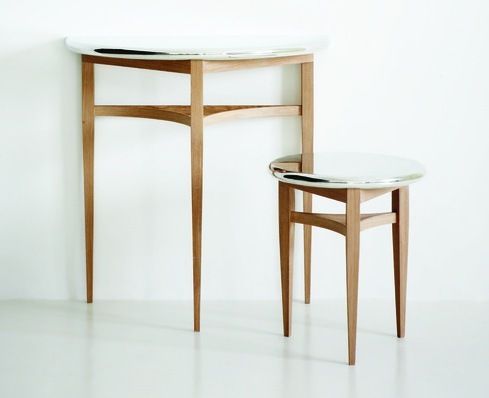
Wondering what’s special about suppliers on Furnish? Take a look at Benchmark.
Established by Terence Conran and Sean Sutcliffe in 1984, Benchmark is a design-led manufacturer of bespoke furniture. Producing contemporary classics with sustainability in mind, Benchmark furniture is handmade and built to last. Benchmark was the first furniture maker to receive the Queen’s Award for Enterprise in Sustainable Development. The company is founded on a belief in the enduring appeal of good design, celebrating high-quality materials and traditional craftsmanship, while harnessing the latest in modern technology, machinery and tooling.
Excellence in design and a passion for furniture is expressed across the entire collection, which includes the work of well known designers such as Thomas Heatherwick, Russell Pinch and, of course, the indomitable Terence Conran. Alongside these big names are pieces from up-and-coming independent designers, as well as the Benchmark in house team. Supporting young designers, Benchmark also runs an award-winning apprenticeship programme, providing training for the designer-makers of the future.
The furniture collection is exclusive to Benchmark and handmade to order from start to finish by highly skilled wood and metalworkers. Benchmark encourages customers to visit its showroom and workshops in West Berkshire to see the furniture being made and provides a personalised service, tailored to meet your specific requirements. Once purchased, each individual piece is marked with a polished pewter disk and registered as an authentic Benchmark original. The disk is individually numbered and you can also choose a personalised inscription of up to 12 characters.
The Benchmark style exudes timeless elegance, simplicity of design, and sophisticated craftsmanship. Innovative contemporary pieces often make reference to the great eras of interior decoration, such as the 1950s-style Emily Console with oblique tapering legs, or the Art Deco-inspired Roman Console with its black lacquered, D-shaped, oak frame and limestone top. The collection pays tribute to the inherent beauty of natural materials, using certified timbers from sustainable sources, as well as stone, leather and metals such as zinc, pewter, copper and bronze. The combination of beautiful materials and expert craftsmanship make this a sensuous collection, both tactile and visually striking. And alongside furniture, Benchmark also produces contemporary lighting such as Partridge & Walmsley’s Fingers Crossed wall light with its beguiling counterbalanced pulley system.
To choose a star product from this captivating collection is difficult, but we think the Normandie chairs, designed by Terence Conran, embody the style and spirit of Benchmark. Drawing inspiration from the second class dining chair on the Art Deco cruise liner, the SS Normandie, the chairs are available in a variety of different options, epitomising the bespoke service offered by Benchmark. You can choose between an upholstered or burr oak backrest, and a natural or mocha stained oak frame. The chairs are upholstered in any fabric of your choice and are available with or without armrests. Angular back and armrests are combined with softly tapered legs for an understated look that’s also high on style. These elegant chairs will last generations and never go out of fashion.

Demonstrating Benchmark’s design historical sensibilities, the company recently teamed up with the Rocket Gallery in London and Danish-American designer Jens Risom to reissue his 1950s and 60s furniture designs. Made by Benchmark with the close involvement of 94-year-old Risom, the first collection of nine pieces to be reissued includes an easy chair and a side chair, a desk and a magazine table, four coffee tables and Risom’s iconic upholstered bench. An exhibition of the collection runs to September 4th 2010 at the Rocket Gallery, in the Tea Building, 56 Shoreditch High Street. Risom describes his designs as ‘an American version of Scandinavian modern furniture’ and the exhibition is well worth a look for mid-century design devotees. The result of another collaboration with the Rocket Gallery, the Hexad coffee table by Tomoko Azumi won Benchmark a Wallpaper* Design Award earlier this year, and further products designed by Azumi are due to be launched as part of the London Design Festival in September.
As well as its collection of handmade furniture, Benchmark provides a specialist service for commercial and public projects, working with architects and interior designers. Benchmark has recently completed a bespoke commission on a grand scale for the London Library. Patinated brass, dark oak, reeded glass and leather in shades of oxblood have been incorporated throughout the library, linking the rooms together and seamlessly combining old and new. Working with architects, Haworth Tompkins, Benchmark have made around one hundred pieces of individual furniture, all with contemporary lines and designed for modern day use while harmonising with the historical setting, existing furniture and architectural features.
Benchmark is one of the great success stories of British manufacturing. Looking to the future with respect for designs of the past, Benchmark is committed to innovation and technological advancement while celebrating and fostering the continuation of craft practices. Supporting 45 staff, running an apprenticeship scheme and employing and training up workers from the local area, the business as well as the furniture is built to last.
Colour watch: Blue
From daring midnight blues to breezy, calming baby blue hues you can blend and contrast different tones, shades and palettes to create a harmonious room.
Colour sparks individuality, creativity and mood which is why it is such an integral part of art and interior design as well as influencing the way we perceive the world. Whether you want to create a room that has a relaxing ambience or simply to add some drama and excitement there is a shade of blue for you. Blue is a primary colour and one of the cooler shades on the colour wheel that will bring a calming influence to a room. Blue shades are associated with the sky and sea, and also loyalty, stability and relaxation which makes it a popular choice in many homes.
Choosing the right blue
There are plenty of versatile shades and huesof blue to choose from that will work their tranquil magic in any room of your home. Consider the size of your room and how much natural light it gets because choosing a darker shade will make a small room feel less spacious and more enclosed. Use a colour wheel to help you make the right choices with colour; it is a visual aid to help you understand the relationship between different colours. For example, midnight and sapphire blues are great for feature walls in fair sized living rooms or bedrooms because deeper shades, when used sparingly, create a dramatic impact but do not darken the atmosphere and mood of your interior. To make the right decision for your wall colour, a top tip is to get a sample pot or tester from any paint supplier and try it out in different parts of the room where the light will hit it differently. If in doubt, go for a lighter shade with warm tones that will prevent the room feeling cold and unwelcoming.
Tonal scheme
You can create a harmonious room by choosing various tones of blue which are created by adding grey or black in order to make a dulled or muted shade, or with white to give a cooler, pastel shade. Use deeper tones nearer the floor and work upwards into lighter hues to give a feeling of space. For example, an exotic blue rug will bring texture and depth to wooden flooring.
A monochrome interior is great for contrasting light and shade and will bring a different dimension to your interior. The key to this look is to experiment with pattern and texture to prevent the colours becoming too bland. A monochromatic room in blue should use a single shade of blue paired with white; sky blue walls with deeper sea blue furnishings can be combined with white fabrics and accessories such as flowing curtains, tablecloths or cushion covers. You can even bring a nautical touch to your home with classic blue and white stripes.
Analogous colour scheme
An analogous colour scheme is as easy to create as the monochromatic scheme but it provides more nuances to complete a richer look. Blue can be combined with green and purple hues that bring a deeper interest and encourage feelings of serenity because the colours are reminiscent of the ocean. Avoid combining warm and cool colours in this scheme because they will not work well together. Instead, combine light and dark blues from the same colour family that use the same undertone. This is important in maintaining a natural and desirable scheme that uses colours that you would normally find together in nature.
Complementary colour scheme
Complementary colours are aesthetically pleasing and they are placed opposite to each other on the wheel for the correct pairing. For the best results you should place cool hues against warm tones. Orange is the complementary colour of blue because together they provide an exciting combination that will accentuate the best features in your room. Use orange highlights in patterned fabrics or accessories, for example, because you can overdo it and create an unwanted clash of dominant colours.
Pairing one light and one dark tone of each of your chosen colours works well to give an aesthetically pleasing contrast. The pair can be combined using a muted version of one colour on the walls, and a more intense version of the other colour in furnishings and accessories. Blue with red orange and yellow orange is known as a split complementary scheme which can be used to promote a high contrast and a dramatic look. Complementary colours will work well when used in floral fabrics, drapery and upholstery to naturally highlight texture and brighten your interior.
Accents
Rather than painting an entire room in blue, you can introduce the colour into a white based room with vases, art work, cushions, and other decorative pieces. Accents can also fall out of the basic colour scheme; use complementary colours such as turquoise or fuchsia pinks to brighten up the subtle or deep blue tones in your room. Also, with metallic shades being a hot trend this season you can use hints of silver or gold throughout your room to create a feeling of opulence.
Emily console table from Benchmark
Bag yourself a bargain and a design classic at the same time with this Emily console table from Benchmark. Was £1450 Now £1160
Benchmark are one of my favourite design companies when it comes to classic yet innovative furniture.
It's no surprise that the godfather of design, Sir Terence Conran heads up this emporium of gorgeous home wares.
Beautifully crafted dining tables sit alongside elegant yet cutting edge and oh-so comfortable sofas that are being added to my wish list at a rate of knots. Top of my list at the moment however, is this stunning Emily console table.
Made from solid walnut, the drawer is covered in pewter making it an simply stunning choice.
Use it as a sleek addition to a hallway as intended, a simple yet show-stopping dressing table or in your dining room as extra storage space.
Best of all, this beautiful piece of furniture is now has a whopping £290 off in the summer sale, which means you really have no excuse not to invest, do you...
Colour Watch: Red

If ever there was a colour that could be characterised by ambivalence, it’s red.
Colour triggers an emotional response and while some find red to be warm and seductive, others consider red to be too strident a colour and are repelled by its intensity. ‘My mother warned me to avoid things coloured red’, Swedish artist Claes Oldenburg recalled (as he studiously ignored her advice). Cultural interpretations of red are as polarised as emotional responses to it: red is the colour of revolution as well as royalty, of passion as well as danger, and of prosperity as well as debt. It’s the very ambivalence of red that has designers returning to the colour again and again for inspiration.
In Pantone’s spring 2010 colour report, the fashion director of Neiman Marcus, Ken Dowling, was in no mood to capitulate: ‘RED is the message from the catwalks; bright lipstick to deep Bordeaux will fill…a colour saturated season.’ In the world of interiors, Ligne Roset is celebrating its 150th anniversary this year with a trio of limited edition products, including a reissue of the 1971 Pumpkin chair by Pierre Paulin, upholstered for 2010 in a segmented spectrum of reds. And if another bold statement was needed, it’s the latest temporary Pavilion to be commissioned for the Serpentine Gallery’s annual series. Opening in Hyde Park on July 10th and designed by French architect Jean Nouvel, the entire structure is rendered in the vivid red of vine-ripe tomatoes, London buses, and traditional telephone boxes.
On trend for 2010, red has been applied in interior decoration for centuries. Louis XIV covered Versailles in the ruby colour, dressing 435 royal beds in red damask. Dining room walls in palaces and stately homes were decorated in rich burgundy reds as a signifier of status and a complement to gilt framed paintings, a centuries old fashion that reappeared in Victorian town houses of the 1800s. Influencing architectural modernists, and gathering around Dutch artist Piet Mondrian, designers of the early 20th century De Stijl movement used pillar-box red with black, white and primary colours to suggest the energy and vitality of modern life, and the promise of a utopian future. 1950s suburban semis were adorned with peachy and pinkish red tones, while the influence of Pop Art in the 60s and 70s saw a move back to bright reds, as well hot pinks and oranges.

While true reds are not for everyone, the red colour palette is as various as its historical applications in interior decoration: from bright tomato to dark blood red, and rich cherry to deep plum tones; from peachy reds to terracotta and rust tones; and from scarlet and crimson to soft berry blushes. Reds with orange or pink undertones are the hottest hues, while reds with blue undertones, such as burgundy or maroon, create a sultry and seductive feel. If you’re looking for depth and warmth, pair red with one of the colours next to it on the colour wheel, such as shades of purple, orange or brown. If red is to be your accent colour, pair it with a neutral such as grey or tan. And if you’re going for high impact, pair your chosen shade of red with its opposite on the colour wheel: a shade of green. Bright colours go well with others of the same intensity and saturation, and if you’re combining different shades of red in the same room, remember that crisp clean shades rarely work together with those of a dirtier dusky hue. While light and dark or warm and cool shades will work together, the clean/dirty combination can be jarring.
For an atmospheric dining room, try a deep red on the walls with accents in gold and grey green. In the living room, a bright red sofa with hot pink and orange cushions will create a retro feel, while combining ruby red with other jewel colours, such as purple or deep blue creates a sumptuous look. In the kitchen, red accessories create a sense of activity, lifting the spirits and leading the eye. Create a really fresh look by teaming red with turquoise, or pair reds with greys for a sophisticated and indisputably modern feel. For a romantic and restful bedroom, raspberry, moss green and dark brown are a great combination.
Take the risk out of red with fabric swatches, wallpaper samples, and tester pots; experiment with different shades and colourways to create your perfect palette.
Little Greene to support Breast Cancer Awareness Month
Donations to be made from every can of paint sold during October 2010
The Little Green Paint Company, renowned for its sophisticated wallpapers and inspirational paint colours, has a long-standing commitment to supporting Breast Cancer charities. This year is no exception, and Little Greene will be making a special donation from every can of paint sold during Breast Cancer Awareness Month, October 2010. Charity begins at home, after all.
Extensive research goes into each highly pigmented paint colour in Little Greene’s exclusive English Heritage, Catwalk and Original collections, for spectacular coverage and depth of colour. There are few things more satisfying than a freshly painted room, and by choosing a Little Greene paint you’ll be making a difference that extends well beyond four walls.
Paint cans specially labelled with the Breast Cancer Awareness pink ribbon will be sold via the internet and UK stockists for the month of October, with Little Greene committing to donate 15p from the sale of every can of paint. And what’s more, as customers we’ll have a say in how the money generated will be spent. An online vote will determine how the money raised is shared out across a selection of breast cancer charities partnering Little Greene’s campaign. Have your say via Little Greene’s website from 1st October to the end of November.
By visiting www.thelittlegreene/charity, you’ll also be able to follow the progress of major breast cancer charities that have joined up with Little Greene to raise awareness and provide much needed resources for breast cancer research and support networks.
As interiors obsessives, we’re all aware of how much our mood and sense of wellbeing is influenced by our environment, and many of these charities are working to improve those of patients and their families.
David Mottershead, Little Greene’s MD said “We are delighted to support such an important issue, one that is close to our hearts at Little Greene; this is part of a long-term commitment to help breast cancer sufferers and the associated research to beat this disease. I am confident the programme will be a success.”
Best of British
Celebrate the best of British design with stylish and sustainable furnishings.
There are plenty of reasons why you should be proud to be British, one of these being our enthusiastic and imaginative contribution to the art and design industry. An important aspect which the following designers have in common is that they design and manufacture their products in the UK. They draw their inspiration from natural and everyday surroundings, and they aim to help the local community and the environment too.
Design Company: MissPrint London (missprint.co.uk)
MissPrint design a collection of wallpapers, wall vinyl, vintage furniture and lampshades. All of their fabrics are silk-screen printed by hand which means they are handled with great care and with precision in the detailing to give a beautiful finish. Also, all MissPrint products are designed in a small East London studio by mother and daughter, Yvonne and Rebecca Drury. Their Dandelion Mobile wallpaper has proved to be very popular, and its success has led to MissPrint adding two new colour ways to the collection. Its illustration style is influenced by 1950’s design which gives it character with a modern twist.
MissPrint’s studio overlooks a park which helps them understand and get their inspiration from nature and their urban environment. With nature being close to their hearts, all of their products are produced in an environmentally friendly way, including their wallpaper range which is PEFC certified and printed with organic inks. Yvonne claims that they manufacture their designs in the UK “because it is beneficial to our communities, it stimulates trade and helps local employment. It also supports other small UK business.” So, from design through to production a lot of thought goes into the way their designs make it into your home.
Designer: Claire Coles Design (clairecolesdesign.co.uk)
Claire Coles designs a range of wallpapers that are rich in texture and are very intricate and artistic. In 2005 she launched a range of embroidered ceramics, including mugs, tea cups and vases, and also framed artworks. Claire is based at her Bloomsbury studio at Cockpit Arts in London, where all wallpapers are made to order and designed to fit individual personal requirements.
Coles’ hero product is undoubtedly her beautiful wallpaper that uses traditional imagery such as florals and birds which give it a vintage, English garden appeal. Her wallpaper display for Liberty of London was one of her first commissions. Her designs include fragments of hand-sourced vintage wallpapers with silks and leather that give them a luxurious and distinctive style. However, I imagine her tea cups are a popular choice for the perfect, quaint addition to any garden tea party. What could be better than a traditional British afternoon cuppa?
Claire manufactures her designs in the UK and all of her wallpapers are designed and handmade in house; they are made to order and they are also promoted through design/craft fairs and galleries. She has previously exhibited at 100% Design in London which encourages the use of sustainable materials.
Designer: Lorna Syson Textiles (lornasyson.co.uk)
In 2009, Lorna set up her own label Lorna Syson Textiles with help from the Princes Trust, and she is now based in Coventry. She designs and creates hand-made textiles, including cushions and wall flowers that are predominantly floral inspired. Her most popular designs are the oversized wall flowers, particularly the stunning double sided dahlia pieces because each petal is sewn on individually ensuring that every flower is unique. These are three dimensional wall sculptures that are organic and decorative art pieces.
Lorna manufactures in the UK because she feels “it is important to utilize and support UK skills, and it also reduces the carbon footprint dramatically for the products.” She is also excited about a new collection that she is working on which she ensures “will be completely eco-friendly, so as well as the products having a very low carbon footprint they will be 100% Eco-friendly and sustainable.” Lorna believes that sourcing from UK companies and manufacturing her products in this country will help to support the British economy. Her large Leaf cushion is made with wool from a UK company, which means that her products are designed, manufactured and sold in the UK, right down to the finer details such as laser cutting, cushion inner and labels.
Design Company: MARK Product (markproduct.com)
MARK Product is a furniture and lifestyle brand from Cornwall that combines style with comfort and sustainability. During the Clerkenwell Design Week, the award winning Net Chair designed by Sam Johnson and the Wave table by Kay and Stemmer were both used. The Net Chair was inspired by fishing nets left to dry in the sun. John Miller from MARK product says that Tomoko Azumi’s Spin side tables are “so handy and portable, and have a special kind of “personality" and that they are “a very "MARK" product, exemplifying our two guiding principles of sustainability and practicality”. They are available in European Oak and Black American Walnut woods, and with Blue, White and Pebble grey tops/shelves.
The company champions local craftsmanship and presents the very best designs and values from contemporary Cornwall. Outside of London, Cornwall has the highest number of artists and designers. 80% of the company’s products are manufactured in Cornwall and the remaining 20% in the UK as part of their policy of using local resources which “reduces manufacturing miles, sustains and develops local craft skills, and benefits the customer though a more responsive service.”
These designers prove that style and sustainability can be combined to create some of the most dynamic designs of our time. They are in keeping with the change our lifestyles towards an eco-friendly environment both inside and out.
Fashion Houses and Interior Décor
Fashion's foray into interior design...
Over the past ten years or so, an increasing number of fashion designers and fashion stores have decided to try their hand at interior decoration. It just goes to show the close relation between the worlds of fashion, architecture and interiors. And if you like a particular brand’s clothes it’s interesting to see how the design philosophy is translated into an interiors range. Here’s our pick of some of the best fashion houses turned interior decorators.
Zara Home
Taking inspiration from its popular high-street fashion collections, Zara’s interiors range is characterised by classic elegance and original detailing. A fashion edge is introduced each season to the base palette of neutrals – white, cream, greys, silver and gold - with new trend-led colourways and patterns. This season’s colours are hot pink, mimosa yellow and bright green, seen on bed linen, soft furnishings and tableware. Nostalgic touches such as vintage florals and eastern influences such as paisley prints, complement the classic yet quirky aesthetic. All reasonably priced, Zara Home’s product range spans occasional furniture and tableware to bed linen, soft furnishings and decorative accessories. Our pick of the collection has to be the Plates Tea Towel set. The brightly coloured print, featuring cups, teapots and plates, has a fun 1950s look about it and will add some pizzazz to your kitchen.
Missoni Home
Just like its eye-popping clothing designs, the Missoni Home range is a sensuous mix of intense colour, sumptuous fabrics and beautiful patterns. An Aladdin’s cave of lovely stuffs and shapes, Missoni’s 2010 collection is a heart stopping feast for the eyes. Curvaceous oversized furniture and gloriously plump footstools are upholstered in lush coloured fabrics with distinctive prints, repeated on cushions, throws and table linen. Rugs in stylised floral designs such as the Luanda, Bontanica and Bouquet have a 1930s feel, while others feature Missoni’s trademark zigzag stripes. Uplifting, opulent and visually striking, it’s difficult to choose a standout product from the bewildering array of beautiful pieces. But for its distinctive Missoni colour palette and sense of fun, the Rajahstan rug is our pick. A tactile wool rug in the shape of a tiger skin, it’s a fabulous interpretation of the tribal trend, with raised tiger stripes in jewel bright colours on a black background.
Armani Casa
Renowned for its sleek tailoring, the sophisticated simplicity of Armani’s clothing designs is translated into home furnishings at Armani Casa. As with the clothes, Armani’s emphasis is on high quality materials, finish, and attention to detail. The neutral colour palette allows material and formal qualities to take precedence in a contemporary collection with timeless elegance. Simplicity of design is combined with sensuous materials such as leather and lizard skin, glass and polished metal, wood and semi-precious stone. Furniture and lighting has a luxurious hotel feel, and it’s unsurprising that the next venture for the brand is the creation of a hotel chain, Armani Hotels and Resorts. Our pick of the collection, the limited edition Club cocktail cabinet has a 1930s cruise liner feel to it. The cabinet stands on an Art Deco style cross-legged metal frame, with a grey lizard skin exterior, and metallic bronze lacquered interior compartments.
Calvin Klein Home
Another fashion brand characterised by purity of design and modern luxury, Calvin Klein’s interiors range follows on from the classic clothing line. Again, the colour palette is predominantly neutral, with furniture upholstered in creams, greys and browns, and with an emphasis on the beauty of natural materials such as wood and leather. A recent addition to Calvin Klein’s home furnishings range, the exceptional wool and silk rug collection has a broader palette of vivid, rich natural tones as well as subtle hues. Our favourite is the painterly Luster rug in grey-green Beryl Wash. Luxuriously textured and handcrafted in 100% New Zealand wool, it’s a beautiful take on the naturals trend, the subtle wash of colour evoking abstract landscape painting.
Orla Kiely
Orla Kiely’s 1950s and 60s inspired prints are now available on a whole range of interiors products, from wallpaper and lampshades to rugs, cushions and blankets. Translated from the well-known prints on handbags, purses and clothing that made Kiely’s name, retro patterns in bright colours featuring stylised florals and fruits dominate the fun and uplifting interiors collection. Expanding the collection in 2009 Orla Kiely launched a 1950s inspired furniture range with Heal’s. Chairs and sofas in classic 50s shapes are upholstered in Kiely’s trademark fabrics, tactile walnut tables have softly tapered legs and subtly curved tops, while sideboards and cupboards are perforated with the signature Stem design. Our pick of the crop is the Flower Blossom bed linen in teal, white and brown. It’ll give your bedroom a bold new look for summer and touch of mid-century modern style.
Day Birger et Mikkelson
Danish fashion house Day Birger et Mikkelson has a built its reputation on an aesthetic of relaxed glamour and an emphasis on craftsmanship. Fashion collections are a fusion of contemporary styling, classic elegance and bohemian detailing. The home collection exhibits the same ‘global traveller’ aesthetic, with eastern-influenced prints and embroidered cushions, such as the Kasbah, sensuous fabrics including velvets and natural linens, and campaign-style occasional furniture such as the Camp table in black-stained mahogany. Decorative accessories such as bell jars and pierced silver-plated trinket boxes have a classic colonial feel. And continuing the expeditionary theme, our hot picks are the Bee and Beetle cushions, which highlight the trend for naturalist prints and imagery in interior decoration.
There are sure to be more forays into the world of interiors by fashion designers in the next few years, so keep a close eye on your favourite brands.
Colour Watch: Green
Nature’s favourite colour, green works so well in interior design because it’s both reassuringly familiar and alluringly escapist.
Conjuring images of rolling hills, grassy meadows and mossy forest glades, green is an uplifting and soothing colour that evokes a sense of wellbeing. In religious and folkloric tradition, green symbolizes eternal life, renewal, and hope. Yet, negative associations of poison and decay, inexperience and envy, sickness and institutionalisation, sit alongside the positive associations of green with healing and safety, freshness and rejuvenation, purity and calm. It’s a question of choosing the right shade. When Johnny Cash sang ‘Forty Shades of Green’ he wasn’t far wrong: occupying more space in the spectrum visible to the human eye, there are more shades of green than any other spectral hue.
Historically, different periods have favoured different variations of green. The dark olive greens of Georgian estates spoke of hunting lodges and ancestral woods, while the Regency period moved towards a softer, more muted shade of sage. Victorian interiors featured dark and atmospheric forest green, while an emphasis on light and space in 20th century interior design brought with it paler shades of mint in the 1930s and hints of lime in the 1950s. The last few years have seen a return to the sage grey-greens of the Regency, and elegant duck egg blue-greens remain ever popular. However, if Pantone’s 2010 colour of year, a vivid shade of turquoise, is anything to go by, we’ll be seeing crisper and brighter shades of green springing up in the world of interiors.
Green is a balancing colour, invigorating yet restful to the eye, making it a calming agent and a particularly liveable colour in the home. When choosing a shade of green, think about the mood you want to create: rich and dramatic, uplifting and refreshing, or soothing and meditative. Greens with yellow undertones are generally warmer, while blue greens are more tranquil. Green is a particularly versatile colour in that different shades can be combined harmoniously with relative ease. Unlike other colours, and taking nature as a model, clean and dirty shades of green can be used together in one space. For a sea of greens to work in one room, just make sure that the undertone (either yellow or blue) is the same across each shade.
Fresh, crisp greens work particularly well with black and white as neutrals, while emerald green goes fabulously well with other jewel tones such as purple and sapphire blue. Grey, yellow and gold tones are also great with green and don’t let anyone tell you that ‘pink and green should never be seen’. Pea green and rose pink is a joyful pairing, and combines well with brown tones. But the colour that unites every shade of green - from the misty greys through duck egg and teal, to racing green, lime and apple – is navy. Tying together the enduring sage greens and duck eggs with the current trend for fresher and brighter greens, navy is definitely a colour to watch; use it as a neutral with any shade of green and it’ll give the look a contemporary edge.
Green can work in almost any space because of the huge variety of shades, but take extra care with bathrooms. Depending on your skin tone, covering the smallest room in the house with green can make you look pallid, which isn’t a good look when you’re getting ready to go out (unless it’s Halloween). A blue green rather than a yellow green is often more forgiving. As with any colour choice, always use tester pots in the corners of the room and judge the effect of variations in natural and artificial light. Introducing green through soft furnishings and accessories is a great way to harmonise a room scheme. It’s the central position of green on the colour spectrum that creates that sense of balance. Draw the eye with vivid accessories in a single shade of bright green, or create a varied landscape of different shades and textures with cushions and throws. A beautiful way to accessorise with green is with leafy plants. A variety of ferns in decorative pots bring a lovely finishing touch your home.
Breathe new life into your home and capture the essence of springtime with green.
Trend watch: Wood
Stay in style and go green by choosing some gorgeous wood furnishings that will give your home a long-lasting, natural look.
Wood inspires a naturally beautiful interior that exudes texture and will provide you with a long-lasting stylish look. Its inviting feel makes it an irresistible choice for anyone looking to give their home an eco-friendly makeover. It isn’t hard to bring this current trend into your home, whether you are redecorating a whole room or just looking for a stunning feature piece you can mix and match different tones of wood furniture or find decorative pieces to suit your personal style.
Furniture and storage
Wood furniture has a versatile look whether it is polished or rustic to suit either a modern or traditional style interior. There are some fabulous dark wood furnishings available from Lombok (lombok.co.uk) including the simplistic Malang writing desk and the rustic Tallboy chest of drawers. The darker stains found in teak or mahogany, for example, can be complimented with oranges and earthy paint colours to bring warmth and drama to a bedroom or living room.
Lighter wood tones such as oak and pine work well in living and dining areas to maintain a light and spacious feel. The pine Rustic open book shelves from Rose & Grey combine shelf storage with natural style; the wood markings are something to treasure as they make your furniture unique. Enhance your wood’s finish with wall colours and fabrics that will bring out the dominant hues in the stain.
Or bring a natural, Zen feel to your bathroom with a wooden bath from William Garvey that you can relax in at the end of a hard day’s work.
Flooring
Solid wood flooring creates a natural warm ambience and it’s very long lasting, although it must be installed by a professional. Despite needing a larger budget to complete this look, in the long run it is an excellent investment for its authenticity and durable beauty which improves with age. Engineered wood flooring is more resistant to moisture changes. Pre-finished wood gives you a wide range of choice of finishes and styles. Alternatively, laminate flooring does not use real wood but imitates the look, and it is a popular choice because it is affordable for those with a lower budget and it is easy to lay and fit. The disadvantage with this type of wood is that it will not be as durable as natural wood and they won’t feel as warm underfoot. For specialist floors try 1926 Trading Co. Ltd.
Bamboo is a lightweight sustainable material used for furniture that makes it easy to rearrange and it will give a room a calm and modern feel. However, it is most commonly used for flooring because it’s an eco-friendly resource that is not only strong but durable too. Check out Urbane Living’s bamboo flooring or for more ideas try Moso bamboo surfaces.
Accessories
Don’t be afraid to mix and match with wood types and styles because this is very much in vogue this season. Interior designers are encouraging us to mix the old with the new and to embrace the beautiful natural appearance of wood.
Choose accessories that aren’t permanent fixtures, for example, a large piece like the solid mahogany Limed screen from The French Bedroom Company. Wooden screens or dividers give a stunning chateau-chic impression that will suit any lavish boudoir.
Try a few statement pieces to lift your interior, for example, vases or picture frames are great for adding a personal touch. Accessorising with wood doesn’t have to be expensive; John Lewis supply vases in different shapes and sizes to make your home flourish with texture. If you have a small bathroom, try a wooden framed mirror such as the handmade Faux driftwood mirror from Pebbles to Sand to bring a washed-up beach look.
For an inspiring pendant lighting to illuminate your interior, try Tom Raffield’s Ribbon pendant from MARK Product (available in ash or walnut), for a unique sustainable wood design that has a contemporary and stylish allure.
Our weekly pick of interiors blogs… Jul 18th
Another week’s rolled by, adding three new writers to our blog roll.
First up this week is Australian interior designer Shannon Fricke. Shannon started her eponymous blog as a photo scrapbook for all of us in need of a bit of decorating inspiration and it definitely does the trick. You’ll always find something worth squirreling away, whether it’s a great colour combination, a beautiful wallpaper pattern or a whole room scheme. Shannon runs decorating workshops in her hometown of Bangalow (love the name), and the blog makes me think a whole day in the air might actually be worth it.
Next up is the fabulous Please Sir. It’s the work of textile designer and flea market aficionado, Diana Martini, whose eye for style and grasp of design makes this blog a delight to read. It’s an eclectic and uplifting blog, chock full of interesting bits and pieces. Whether she’s waxing on about a vintage find or an artist she’s just discovered, Diana’s well-informed posts and charming writing style will keep you coming back for more. And if you love mid-century style, it’s definitely one to watch.
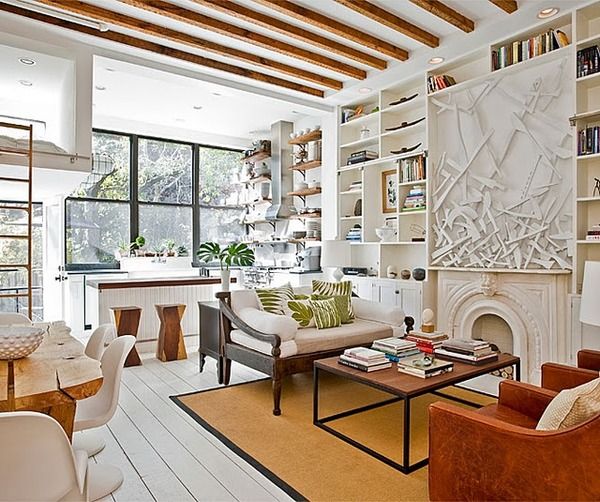
Lastly this week, it’s Traci French with Bliss. And it’s a blissful read. There’s plenty of interiors inspiration to keep you going on here, and even more so since Traci started remodelling her own home. She’s got an engaging writing style and shares the discoveries of her wandering eye with fabulous photographs. Traci’s weekly ‘I heart…’ posts are great for virtual window-shopping and she’s always got a new designer/architect/artist up her sleeve; a blissful blog indeed.
As always, get in touch if you want us to feature your blog next time round.




